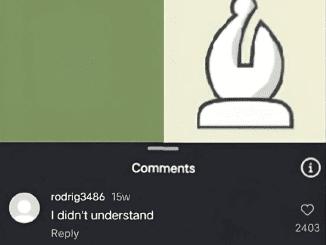Have you ever scrolled through social media and seen one of those simple-looking math puzzles that claim only a genius can solve them? This one’s a classic — it looks easy at first glance, but it’s designed to test more than just your basic arithmetic. The real challenge lies in how closely you’re paying attention.
Here’s the puzzle that’s been stumping thousands online:
A + A = 30
B + B = 20
C + C = 8
A + B × C = ?
At first glance, you probably thought: “No big deal. I got this.” But did you really?
Take a moment. Look again. Solve it in your head before we walk through it step-by-step. Ready? Let’s dive in.

Why People Often Get It Wrong
The simplicity of this puzzle is exactly what throws people off. The most common mistake? Rushing to calculate from left to right and ignoring the order of operations. In school, many of us learned a helpful acronym: PEMDAS — Parentheses, Exponents, Multiplication and Division (from left to right), Addition and Subtraction (from left to right). But let’s be honest: when you’re staring at a casual math problem on your phone, you might not think about PEMDAS. You just crunch numbers.
That’s exactly what the creators of this puzzle are counting on. It’s a trap, and many people fall for it.
Step-by-Step Breakdown: Let’s Solve It Together
Let’s stop guessing and start solving this logically.
First, look at the three equations given to us. Each one helps define the value of a letter.
A + A = 30
That’s 2A = 30. Divide both sides by 2.
A = 15
Next, B + B = 20
Which is 2B = 20. So, B = 10
Then, C + C = 8
That means 2C = 8, and C = 4
So far, so good.
Now we plug those values into the final expression:
A + B × C
Using what we just calculated:
15 + 10 × 4
Here’s where the order of operations comes into play. Don’t just go left to right.
Video : Can You Solve A+A=30,B+B=20,C+C=8,A×B×C=?
Multiplication comes before addition.
So first, calculate 10 × 4 = 40
Then add A: 15 + 40 = 55
The Final Answer Is: 55
Did you get that?
If you got something like 100, here’s what happened: you likely added A + B first (15 + 10 = 25), then multiplied by C (25 × 4 = 100). That makes sense if you’re moving from left to right without considering math rules. But according to proper math order, multiplication always comes before addition unless parentheses change the order. Since there were no parentheses, 10 × 4 happens first.
The Importance of Details in Logical Thinking
This puzzle is a perfect example of why attention to detail matters. In life, we’re constantly making quick decisions — and many times, we don’t even realize we’re skipping steps or overlooking details. Puzzles like this train your brain to slow down and process information logically.
What’s beautiful about this particular riddle is that it’s not about advanced math. It’s first-grade level in terms of operations. But it forces your brain to switch from “casual scrolling mode” to “wait a second, what’s really going on here?”
How to Spot the Trick Next Time
The trick lies in the structure. When you see a mix of operations (like addition and multiplication), your brain wants to take the easy road and do everything in order. But a seasoned thinker will pause and ask, “Is there a hierarchy of operations here?”
Think of it like driving. If you approach an intersection with a stop sign and a traffic light, which do you follow first? Just like that situation, math has rules about what takes precedence. In this case, multiplication comes before addition. And recognizing that is the difference between solving the puzzle correctly or falling for the bait.
Try This With Your Friends and Watch the Reactions
Now that you know the answer and the logic behind it, you’ve got the upper hand. Try sharing the puzzle with your friends or family. Don’t give them any hints. Just see what they say.
Video : iQ test
Most likely, you’ll hear them say “100” within the first few seconds. Then you can smile and walk them through the correct way to solve it. It’s a fun way to spark conversation, challenge logic, and even sneak in a quick lesson on why thinking slow is sometimes smarter than thinking fast.
Let’s Hear From You
Now it’s your turn. Drop a comment below:
Did you get the correct answer right away?
Did the order of operations trip you up?
How many of your friends did you stump?
Share your thoughts, your logic, or even your frustration. It’s all part of the fun.
And don’t forget to challenge someone else with this riddle. You already solved it — now it’s time to see who else has what it takes to slow down and think smart.
Ready for the next challenge? Let’s go sharpen that brain a little more. See you in the next puzzle!


